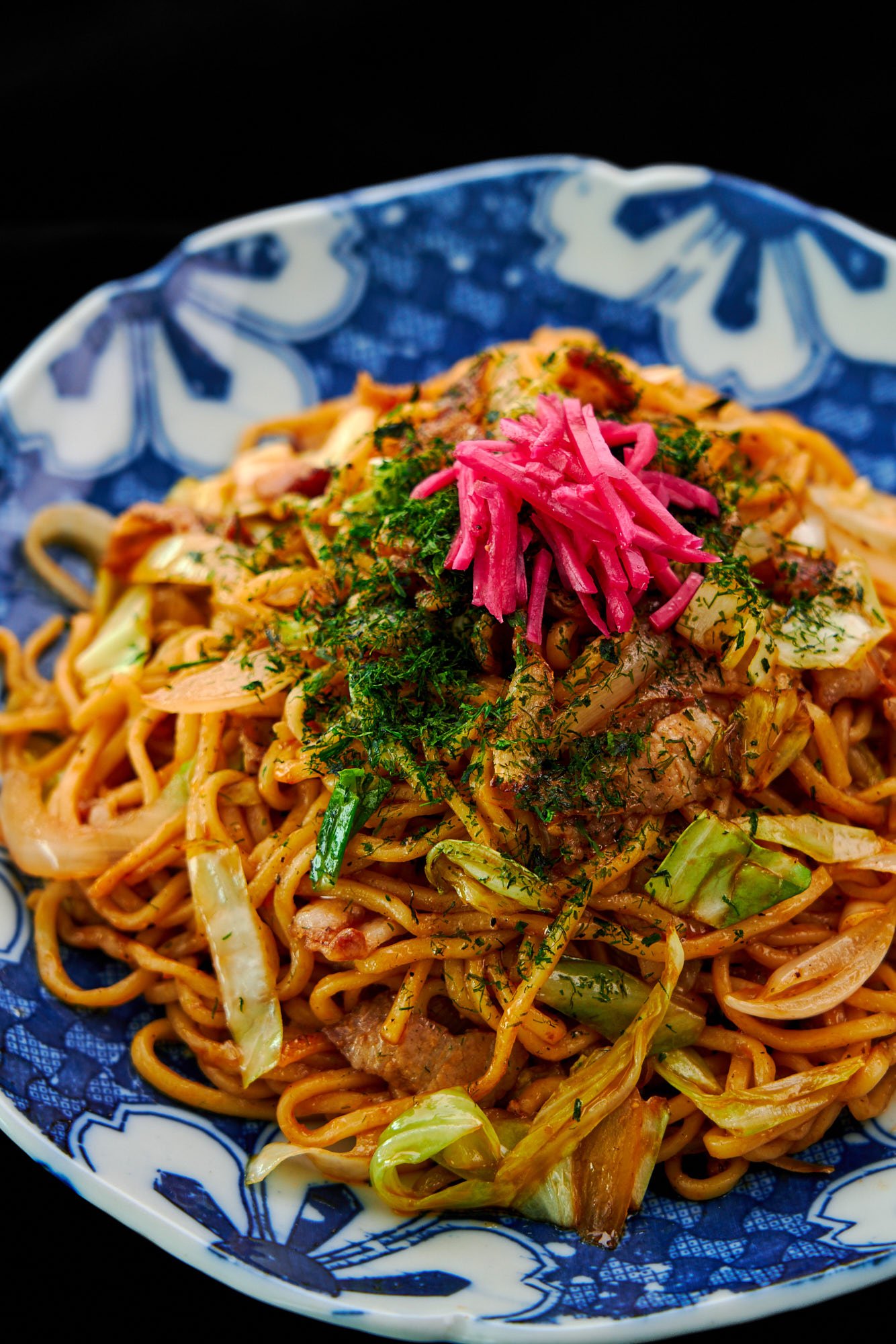
What is Yakisoba?
Yakisoba (焼きそば) is one of the best known street foods in Japan, and the name literally means “grilled noodles.” It's thought to have originated from Chinese cuisine and became a popular fast-food meal in the black markets that popped up around Japan after the war. In an era when food was in short supply, and the country was busy rebuilding, the basic ingredients needed to make yakisoba, and the possibility of preparing it on large steel griddles called a teppan (鉄板), made it ideally suited for these makeshift outdoor markets.
Jump to:
Why This Recipe Works
- Parboiling fresh ramen noodles for a minute less than the package instructions ensures they stay nice and chewy.
- Using a large heavy bottomed pan ensures you have enough thermal mass to caramelize this ramen stir-fry.
- My homemade yakisoba sauce has just four basic ingredients, but it creates a marvelous umami-rich sauce with the right balance of salt, sweet, and sour tastes.
Japanese Street Food
These days, health regulations have all but obliterated outdoor food stalls, but yakisoba can still be found sizzling away in stalls everywhere from baseball stadiums to traditional matsuri (festivals) alongside other popular favorites like Okonomiyaki and Yakiudon. If you’ve ever been to one of these festivals in Japan, you probably remember the smell of the fruity, spicy sauce caramelizing on those giant steel griddles accompanied by the trademark clatter of the stubby metal spatulas used to stir-fry the popular noodle dish.
Ingredients for Yakisoba
While most street food versions of yakisoba are mostly noodles with a few scraps of cabbage here and there, I like loading my yakisoba up with veggies (and sometimes seafood or meat), turning it into a complete meal.
Yakisoba Noodles
Most people outside of Japan associate soba with buckwheat noodles, because soba literally means "buckwheat" in Japanese, but the word was historically used to refer to any long, thin noodle. In fact, ramen was originally known as chūkasoba (Chinese noodles).
In the case of Yakisoba, the noodles are Chinese-style ramen noodles made with wheat flour and alkali, or kansui(かん水). In Japan, these noodles are available in pre-boiled packs specifically for this dish. Although they're convenient, I'm not a fan of them because they're a pain to untangle, and they tend to get overcooked and soft when you stir-fry them. Instead, I like to use fresh wheat noodles like ramen noodles or chow mein, and I boil them myself. It's an extra step, but it's not that much more work, and the results are better.

Yakisoba is so good you'll likely end up eating the whole batch, so if you're concerned with such things as carbs and calories, there's a good alternative: Shirataki Noodles. These noodles made from the corm of a Voodoo Lily are very low in carbs and have virtually no calories. Go check out my Shirataki Yakisoba Recipe for all the details.
Yakisoba Sauce
In Japan, there are a wide variety of fruit and vegetable-based sauces such as usuta sōsu, chūno sōsu, and tonkatsu sauce, which are often abbreviated down to sōsu. They're sweet, savory, and spicy condiments poured on everything from Tonkatsu to cabbage salad, and they're used as a seasoning in dishes ranging from Hamburg Steak to Japanese Curry.
Yakisoba sauce is another condiment in the same category, and while you can buy it bottled, I prefer mixing my ownblend and using condiments available almost anywhere. Ketchup forms the fruity foundation while also adding a mild vinegary tang. Oyster sauce and soy sauce provide the salt and loads of umami, while Worcestershire sauce brings a complex variety of spices that gives the Yakisoba sauce its trademark flavor. If you want your yakisoba spicy, try addingyour favorite chili oil or chili sauce, like gochujang or doubanjiang.
Meat
The most common type of meat used for yakisoba is thinly sliced pork belly. Not only does it add a ton of flavor to the noodles, but it also contributes some fat that helps keep the noodles from sticking together. If you have trouble finding thinly sliced pork belly in your area, American-style bacon is a good substitute; however, you'll need to reduce the amount of sauce you add a little as the bacon can be quite salty.
If you're not into pork, chicken or shrimp are both excellent options, and it's also okay to just leave out the meat altogether to make vegetarian yakisoba (make sure you use a vegetarian Worcestershire sauce).
Vegetables
The vegetables for Yakisoba are cabbage and onions, but you can honestly use any combination of veggies you like. In our home, this is one way we use up odds and ends from the veggie drawer, and I've made this with everything from carrots to bell peppers to snap peas and asparagus. Benishoga and aonori are the standard garnishes, but regular nori, toasted sesame seeds, and green onions will all work.

The Right Yakisoba Pan
Yakisoba tastes best when made on a teppan, but most of us don't have a large high-output griddle in our homes, so here's the secret to getting that great grilled flavor at home.
The traditional teppan gives a large heated surface to work with, so cooks can constantly move the ingredients around to keep them on a hot part of the pan. This cooks the ingredients through quickly, retaining their vibrant color, and allows the ingredients to take on just a bit of char, which is where that wonderful flavor comes from.
To approximate this at home, I use my largest pan with a heavy bottom (cast iron or stainless steel both work well). The large pan gives you extra surface area to work with while using a heavy pan provides a high thermal mass which means the temperature of the pan won't drop as quickly when you add in additional ingredients.
How to Make the Best Yakisoba
First I like to fry up the pork belly, this gives the pork a chance to brown, developing a ton of flavor, and it also allows some of the fat to render out. If you don't use pork belly, you'll want to increase the amount of oil you use in the pan to 2 tablespoons.
Then I give the vegetables a quick stir-fry to give them a bit of color. You don't need to cook them through all the way here, as they'll continue to cook after the noodles get added.
Finally, the noodles are added in and tossed with the yakisoba sauce until it's caramelized around the noodles and the noodles start to brown.
The classic toppings for yakisoba are aonori(green nori flakes) and beni shōga (red pickled ginger), but I also like to top it with some scallions sometimes, and I've even heard there are people who put mayonnaise on it 😱.
Other Festival Foods
Here are some more delightful Japanese street foods to bring the summer festival vibe home! If you're craving more savory options, try your hand at Yaki Onigiri, crispy grilled rice balls with a delightfully crispy exterior glazed with caramelized soy sauce. For a hearty meal, whip up some Osaka-style Okonomiyaki, a customizable savory pancake that's a crowd-pleaser at festivals. On the sweeter side, Mitarashi Dango offers chewy rice dumplings glazed with a sticky-sweet soy sauce, while Daigaku Imo satisfies with its candied sweet potato goodness. And for dessert, don't miss out on Taiyaki, those adorable fish-shaped cakes filled with sweet red bean paste.
📖 Recipe


Equipment
Units
Ingredients
For yakisoba sauce
- 2 tablespoons ketchup
- 1 tablespoon oyster sauce
- 1 tablespoon Worcestershire sauce
- 1 tablespoon soy sauce
For yakisoba noodles
- 260 grams fresh ramen noodles
- 1 tablespoon vegetable oil
For stir-fry
- 1 tablespoon vegetable oil
- 100 grams pork belly (sliced and cut into strips)
- 100 grams cabbage (chopped into strips)
- 80 grams onions (sliced)
- ¼ teaspoon salt
- ¼ teaspoon black pepper
To serve
- aonori (green nori flakes)
- benishoga (red pickled ginger)
Instructions
- To make the yakisoba sauce, stir together 2 tablespoons ketchup, 1 tablespoon oyster sauce, 1 tablespoon Worcestershire sauce, and 1 tablespoon soy sauce until evenly mixed.

- Boil 260 grams fresh ramen noodles for 1 minute less than what’s stated on the package directions.

- Drain and rinse repeatedly with cold water while agitating with your hand to remove excess starch. When the water runs clear and the noodles are cold, drain well and shake off excess water.

- Toss the noodles with 1 tablespoon vegetable oil to coat evenly.

- Heat a large, heavy-bottomed frying pan over high heat. Add 1 tablespoon vegetable oil and 100 grams pork belly and stir-fry until the pork starts to brown around the edges.

- Add 100 grams cabbage and 80 grams onions and then season with ¼ teaspoon salt and ¼ teaspoon black pepper. Stir-fry until the vegetables are cooked but still vibrant in color.

- Add the parboiled noodles to the pan and stir-fry to reheat them.

- Pour the yakisoba sauce over the noodles and toss to distribute evenly.

- Stop tossing the yakisoba noodles for 20 seconds at a time to allow the sauce to caramelize.

- Serve the yakisoba sprinkled with aonori with a mound of benishoga on top.


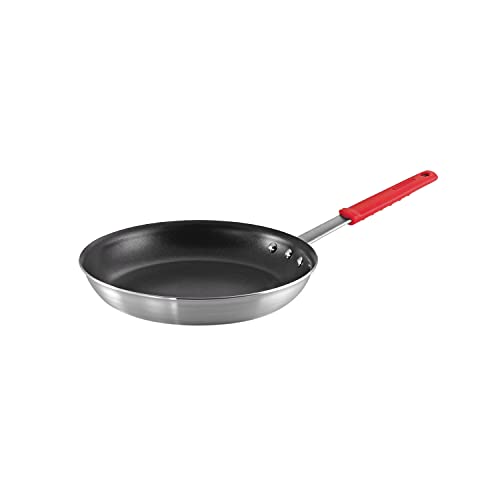


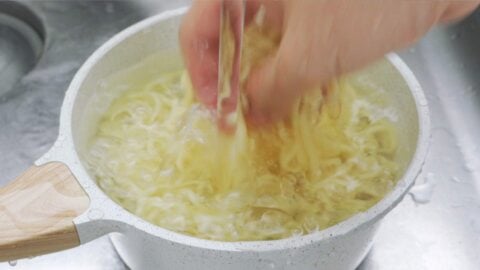
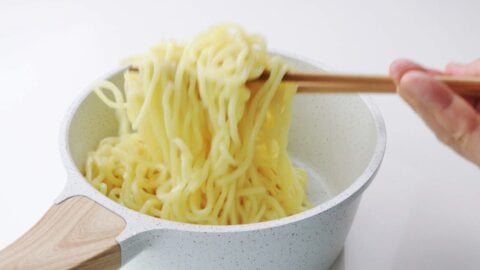
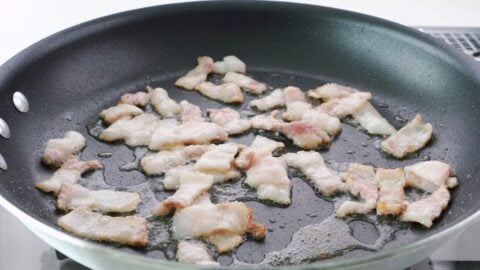
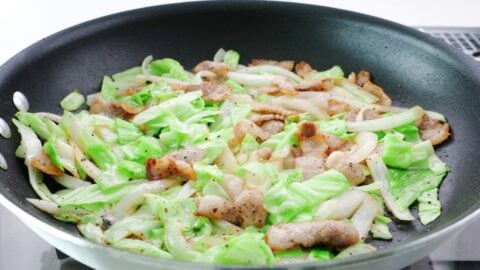
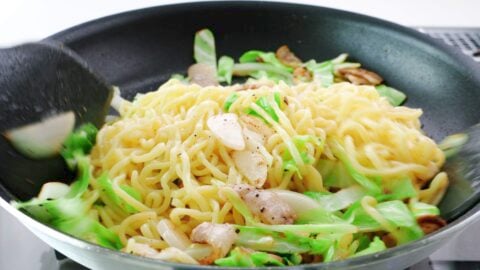
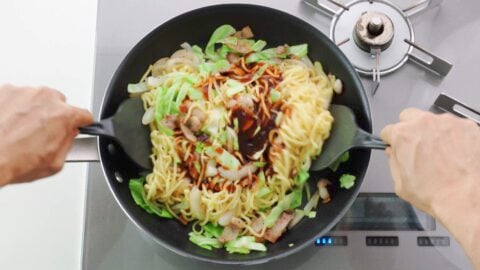
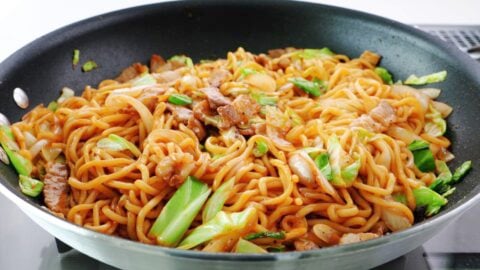
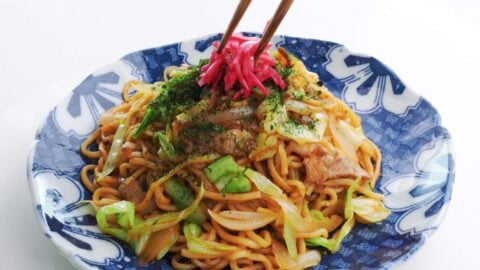
Rebekah says
Do you use Bulldog sauce for Worcestershire sauce? Which brand do you use, please?
Marc Matsumoto says
Hi Rebekah, I use Lea & Perrins. Japanese Worcestershire sauce is too salty for this recipe.
Rebekah says
Thank you Marc!
Elizabeth says
Greetings! Thank you so much for sharing this recipe with the world.
I hate to be a bother, but I am dying to try this recipe but do not have access to fresh yellow noodles, however, I can get dried.
Any thoughts or insight on using dry noodles as a substitute, such as grams of dried equivalent to 230 cooked?
Thank you greatly for your time!
Stay wonderful!
Marc Matsumoto says
Hi Elizabeth, thanks for your kind words! 230 grams of fresh noodles is 2 servings of noodles. Dried ones will work, and you'll want to check and see how many grams it suggests per serving on the package. I hope that helps!
Elizabeth says
Hello Marc! Thank you kindly for your reply and suggestion.
2 servings of dry noodles sounds like a perfect plan. I am beyond grateful for your help and I cannot wait to make this next weekend.
Take care, be well, and smile big.
Elizabeth
Marc Matsumoto says
You're welcome Elizabeth! I hope you enjoy it, and have a great week!
Tatyany Mani says
Thank you for post this recipe Marc. I'm from brazil and our yakissoba here is made in a different way, with more sauce, but the concept is the same. I enjoy to read your post because I learned more about how the original Yakisoba is make.
Marc Matsumoto says
You're welcome Tatyany! Even in Japan there are many ways to make yakisoba (for instance some people season it with just salt and pepper while others use oyster sauce).
Christy says
Thank you for posting this recipe! I have been trying to find one since I lived in Japan. My husband and I love yakisoba! So many good memories.
Marc Matsumoto says
You're welcome Christy, I this is able to bring some memories back for you and your husband!
Jane says
Can I used table syrup (usually for pancakes) instead of honey? I ran out of honey and got tons of table syrup.
Marc Matsumoto says
Hi Jane, I'm not familiar with table syrup, but if it has a maple flavor it will make your yakisoba taste like maple (not that that's a bad thing). Otherwise from a sweetening perspective, it should work.
Hope Baker says
Hello Marc, I am new to your channel and recipes but would like to try them. I have 2 questions: I read in the Comments a few people asking if they could substitute other sweeteners like table syrup, sugar etc for honey. However, I read your recipe for Yakisoba over and over and do not see honey being called for in the recipe. Am I missing something or did you omit honey in your written recipe? Is honey added to making the sauce in addition to ketchup, oyster sauce, soy sauce and Worcestershire sauce?
My second question is from your video, it looks like you’re using a non-stick pan, and not cast iron. Is that so? Can I use a wok for this stir fried noodles? Thank you so much for your time and reply.
Marc Matsumoto says
Welcome to the site Hope! This recipe was recently revised and I cut out the honey (there's additional ketchup in the recipe now which provides plenty of sweetness). As for pan, it's best to use a pan with high thermal mass such as cast iron or carbon steel. Unfortunately I don't have one that's large enough to hold the ingredients, so I went with the next best option which is a large aluminum pan with a thick bottom. A wok will work great if you have a wok burner that's able to heat the whole pan evenly.
Oliver says
Thank you for the recipe. It's difficult to achieve the roasted flavour at home. A local restaurant roasts the vegetables and pork-belly separately on a high heat teppan-yaki, and then caramelises the self-made noodles with sauce in a very high heat gas wok, before coming the ingredients. Still experimenting how to get close to that at home.
Also want to try home-made Usata Sousu at home. Here two links I found (use google translate):
https://web.archive.org/web/20140409170120/http://okonomiyakirecipes.com/komatsu-sans-traditional-okonomi-sauce-recipe
https://coquinaria.nl/tonkatsu-saus/#sansho
Marc says
You're welcome Oliver! The trick to getting that roasted flavor is to use a pan that has a high thermal mass (something very heavy and dense) and preheating it. This will retain heat much better so it won't cool down when you add food to the pan.
Claudia says
Hi Marc, i am so glad I discovered your website. I gave up making stir-fries because no matter what I did, the veggies were always soggy. I was hesitant to try the yakisoba, but your instructions and video helped so much. I make it regularly now and .my husband loves it. Thank you so much
We also love the teriyaki salmon. ☺
Marc says
Hi Claudia, thank you so much for taking the time to let me know how my site has been helpful to you! My focus is on the techniques behind why recipes work, so I hope you're able to use the things learned here to level up your cooking across the board.
Ivan says
Thanks, it was delicious! I have to try more of your recipes.
Marc says
You're welcome Ivan, I'm happy to hear you enjoyed this so much!
Liz says
Excellent! We used dried ramen noodles from Japanese market and oyster sauce without msg. Delicious and easy to make; can see how flexible it would be to add other veggies, chicken, or a fried egg on top (thanks to the Netflix show, Midnight Diner). The sauce was just the right mix of savory and sweet. Loved it.
Marc Matsumoto says
Hi Liz, I'm so happy to hear you enjoyed this, and yes, it's super flexible! We usually just use leftovers for the protein and whatever veggies are in the veggie drawer.
Karen says
Hi Marc, I made this for dinner last night and it was delicious. Thank you for sharing your recipe.
Marc Matsumoto says
I'm glad to hear you enjoyed it Karen, thanks for taking the time to let me know 😀
Patrick Hagerty says
Natsukashi!! I've made this about ten times and it keeps tasting better each time. Reminds me so much of my years in Japan so long ago. Thank you so much for the recipe!
Marc Matsumoto says
You're welcome Patrick, I'm so glad to hear you've been enjoying it!
Danielle says
This recipe takes me straight back to my days in Misawa! I love it!!! Thank you!
Marc Matsumoto says
You're welcome Danielle, glad to hear this could bring back some memories!😀
Nadia says
The recipe didn't really taste like yakisoba but it still tatsed good!
Marc Matsumoto says
Hi Nadia, I'm curious what you're using as a benchmark for yakisoba?
Nikiwe Mwale says
Hi Marc, I want to make this for dinner tonight, but I really don't like adding sweet things to savory dishes. Do you feel the flavor profile will be drastically altered if I omit the ketchup and honey? Or if I could omit one of the 2 which would you recommend please?
Marc Matsumoto says
Hi Nikiwe, Yakisoba (along with most Japanese dishes) uses sweetness to balance salt and to enhance the taste of umami. When cooking I always encourage people to adapt recipes to suit their tastes, but just be aware that it will not be the taste of Japanese yakisoba if you leave the sweetness out. If you're going to leave just one of them out, I'd recommend leaving out the honey. This should cut back on the sweetness quite a bit.
Stella Rusli says
Made yakisoba for dinner tonight, after playing your videos all day long in the background today, makes me crave for Japanese food ❤️❤️
Marc Matsumoto says
Thanks for checking out my videos Stella! Hope you enjoyed this!
kashgirl4 says
Hi Marc,
Thank you for the recipe, it was very tasty and easy to make but I think next time I will maybe only use 1/8 teaspoon of white pepper. I found that it overwhelmed the sauce. Just curious why you chose white pepper vs black pepper.
Marc Matsumoto says
You're welcome! Regarding the white pepper, I prefer the taste of it for this dish, but black pepper will work as well if you're not into white pepper. You could also try reducing the quantity.
Bob says
it sucks
Marc Matsumoto says
Hi Bob, sorry to hear you didn't enjoy it, but "it sucks" doesn't really help me help you. Can you tell me a little more about what went wrong or what you didn't like about it?
Mochan says
Your pronunciation if Sosu is wrong. It's not a long O like in soda.
Marc Matsumoto says
Hi Mochan, thanks for the note, how would you pronounce it? I wonder if this is a regional difference as in the Kanto region we pronounce it with a long O. What area of Japan are you in? It's also typically written ソース which indicates the "so" is extended.
Keith S Lambaunas says
This recipe tasted amazing. I have a fussy 12 year old daughter so I had to make some weird subs (kielbasa) but honestly, it worked. Your video was worked perfect too.
Marc Matsumoto says
Hi Keith, I'm so glad to hear you and your family enjoyed this! Yakisoba is great because it's so flexible. My 8 year old loves cocktails sausages in her yakisoba (not a traditional addition). I should try kielbasa next time 😆
sean wonderling says
"ALI ANDERSON WILLIAMS
Hi Marc, great post. If you were to guess, what do you think the ratios of Worcestershire and ketchup would be to make the alternative sauce? Would you still use oyster sauce?"
I've Read and reread this over and over still missing the reference ... what "alternative" sauce is he speaking of ?
Great looking recipe fully intend to try EVERY SINGLE VERSION very soon lol
Thank you
sean
Marc Matsumoto says
Hi Sean, if you want to go simple, you can do a 50:50 mix of ketchup and Worcestershire sauce, or here's my Tonkatsu sauce recipe that can also be used for yakisoba: https://norecipes.com/katsu-sandwich-recipe/
sean wonderling says
thank you very much
looks like il be doing the Tonkatsu sauce i feel i may like the added fruity sweetness better and you can never go wrong with a little sake (wink) plus i don't mind more complex recipes (usually more flavor to be found there lol)
OaktownGrrl says
Made this last night, just left out the meat because I didn't have any on hand. Delicious! And so easy. Thank you.
Marc Matsumoto says
Hi OaktownGrrl, you're welcome. Glad to hear you enjoyed it!
Magda says
Thank you.
Magda says
Thank you for your simple recipe but yet looks good. I’ll try to make it today.
Marc Matsumoto says
You're welcome Magda, I hope you enjoy it!
Jose says
Great looking recipe. Question, I googled 230g of noodles and that came out to less than a cup (0.93). Is this correct? Is this recipe a single serving? Trying to get everything together in advance. Thank you
Marc Matsumoto says
Hi Jose, you can't measure noodles with cups as it depends on how tightly you pack them (i.e. if you were to smash them into the cup, you might be able to get 230 grams to fit, but that would ruin the noodles). 1 serving of fresh noodles is about 110 grams (i.e. a portion you'd get at a ramen restaurant), this will increase in weight and volume as you boil them as they absorb water. The other thing to take into consideration is the weight of the other ingredients (360 grams of veggies and meat). This should make enough for 2 comfortably and if you are lighter eaters it should be enough for 3.
CS Odeen says
Hey, Jose - it comes to 8 ounces. That's by WEIGHT, not by VOLUME. You're right - 8 oz is about 1/2 cup, but that's measuring for fluid ounces. With grams, you're talking volume, so it's weight. About 1/2 pound (8 oz) not 1/2 cup (8 oz) - English measuring system is so dumb! 🙂
Chris Spera says
This was an awesome recipe. Thanks for sharing this. This was especially welcomed during the COVID-19 pandemic as I was going through a Japanese food crisis. More like this would be very welcomed!
Marc Matsumoto says
Hi Chris, I'm glad to hear this was helpful! I have a ton of easy Japanese recipes you can check out here: https://norecipes.com/cuisine/japanese/ Stay safe and healthy!
Nina says
Hi!
Can I make this dish vegan? Or are there any popular vegan japaneese dishes I can try? Thank you!
Marc Matsumoto says
Hi Nina, it's pretty easy to make this vegan. Just replace the pork belly with a plant-based protein you like that's been seasoned. For the oystersauce you can use soy sauce, and for the Worcestershire sauce (which usually includes anchovies), look for one that's vegan-friendly. As for other plant-based recipes, I have a whole category of them here: https://norecipes.com/diet/vegan/
Dosia says
Hi Marc,
Thanks for sharing this amazing recipe! Love stir fry noodles and Japanese cuisine. However, not a big fan of pork... or beef. Any suggestions what bacon could be substituted with? "Tofurkey" bacon perhaps? I don't want to ruin this great recipe and would like to surprise my partner with nice Friday night dinner.
Marc Matsumoto says
Hi Dosia, you're welcome! Thanks for stopping by to leave a note. There's two reason for adding the pork, the first is for flavor, and the second is that it adds a flavorful fat so we don't need to use as much vegetable oil. Although pork is the most common protein used in Yakisoba here in Japan, I've seen yakisoba made with other meats, or seafood, and it's also fairly common to see it without any protein at all. Some ideas are using chicken, or fried tofu (you can use fresh tofu too, but it will tend to fall apart while stir-frying). In either of these cases I'd recommend increasing the amount of vegetable oil for the stir-fry to 2 tablespoons to keep things from sticking together.
Dosia says
Hi Marc,
Thank you for the tips. I think I'll use faty pieces of chicken and seafood/fried tofu in the future for this dish! Can't wait until the weekend comes to try it 🙂
Marc Matsumoto says
You're welcome! I hope you enjoy it!
Wendy says
This is the dish I miss the most from my days in Japan, when you could get it from the food carts. I had been trying to figure out the right mix of ingredients for years. Thanks for publishing this recipe!
Marc Matsumoto says
You're welcome, thanks for stopping by to leave a comment! I hope you enjoy it!
Eadgyth says
Thank you! I have made this for my family three times now and last time I successfully made it with no recipe. Everyone loves this and even the picky eaters manage to eat their vegetables in this dish. I also like it because it is so quick to make. We buy a large 5lb bag of pre-cooked yakisoba noodles from our local restaurant supply store and divide it into three meals worth. I've also been adding leftover pork roast or roasted chicken to it at the end of the vegetable cook time so the meat can get thoroughly sauced and warmed up. Thank you again for your recipe, this chuno based sauce is much better than the "yakisoba sauce" I was buying pre-made before.
Sircnawsnaws says
Yeah, seems normal to me. Must be just the way her family eats it.
Marc Matsumoto says
Hi Sircnawsnaws, it's not as traditional of an ingredient to add as aonori, but you can reassure your wife that this recipe was made by a Japanese guy living in Japan and adding katsuobushi is not weird.
Sircnawsnaws says
You know, I put katsuobushi on there as in the recipe, and my Japanese wife thought that was weird. I liked it, tho. Like okonomiyaki, etc. Anyway, thanks for the recipe. I put green pepper on there as well.
kathleenditommaso says
Hot night for the SF bay area. Don't wanna cook. Draggin' my knuckles on the ground, it's 95+. Dinner...what to do? I thought what's that noodle dish, yakisoba -- that sauce is great. Raided the vege drawer, boiled up those noodles, tossed it all up w/the sauce. ~20 minutes what w/my slow prep time & "he's" fed. He says, good stuff.
Next day, "hey those noodles were good stuff, will you make them again? Was that a recipe from that Matsumoto guy?"
Dang, seriously? Busted.
Marc Matsumoto says
Great idea adding the pork! Glad to hear you enjoyed it!
onecentinvegas says
Made this for dinner last night. I added some thin sliced pork which I stir fried first, and also added some sugar snap peas wih the vegetables. Left out the katsuobushi, since I addad meat. Increased the sauce a bit, as we like it saucy. This dish was DA BOMB! Fast, easy and really yummy.
Thanks, Marc, for making my introduction to Japanese cooking so easy and tasty. Can't wait to try more things!
Robert Wimberly says
Have you considered Pickapeppa sauce? I subbed it for the Chuno and was very happy with the outcome. Also, it's cheaper and you can get it in any grocery store.
Marc Matsumoto says
Hi KKasper206, the chunou sauce is sweeter and more viscous, so it caramelizes better on the outside of the noodles rather than soaking into the noodles. Give it a try and see what you think.
KKasper206 says
Hi Marc,
I always use the Bull-Dog brand's Worcestershire Sauce - which is the way my mom showed me. How much of a difference in taste is there between their W. Sauce & the Fruit & Vegetable Sauce? I will have to pick up a bottle of this sauce, & do a comparison taste test w/mom & hubby!
Thanks!
KKasper206 says
Hi Marc,
I always use the Bull-Dog brand's Worcestershire Sauce - which is the way my mom showed me. How much of a difference in taste is there between their W. Sauce & the Fruit & Vegetable Sauce? I will have to pick up a bottle of this sauce, & do a comparison taste test w/mom & hubby!
Thanks!
Tokyo Terrace says
Awesome- I'll keep an eye out for it! Hope you are doing well!
Marc Matsumoto says
Hi Rachael, I'm working on a Chuno sauce recipe. Will post it when I get it right:-)
Tokyo Terrace says
I love yakisoba! That was always one of the first foods I craved if I'd been away from Japan for a while and was just returning, usually in late August. I especially loved stirring the unusually bright pickled ginger into the noodles...that's probably my favorite part of the dish. I've been trying to recreate chuno sauce, but have not quite gotten it right. Maybe worcershire + ketchup will do for now...
Marc Matsumoto says
Hi Ali, good question. Try a 50/50 mix, it should look like what's in the bottom left of this photo ( https://cdn.norecipes.com/wp-content/blogs.dir/1/files/2013/07/yakisoba-1.jpg). Dark, and thick. In terms of taste, it's sweet, sour, and spicy (as in spices not chili peppers). Yep, you'd still want to follow the recipe as is (including the oyster sauce).
Ali Anderson Williams says
Hi Marc, great post. If you were to guess, what do you think the ratios of Worcestershire and ketchup would be to make the alternative sauce? Would you still use oyster sauce?